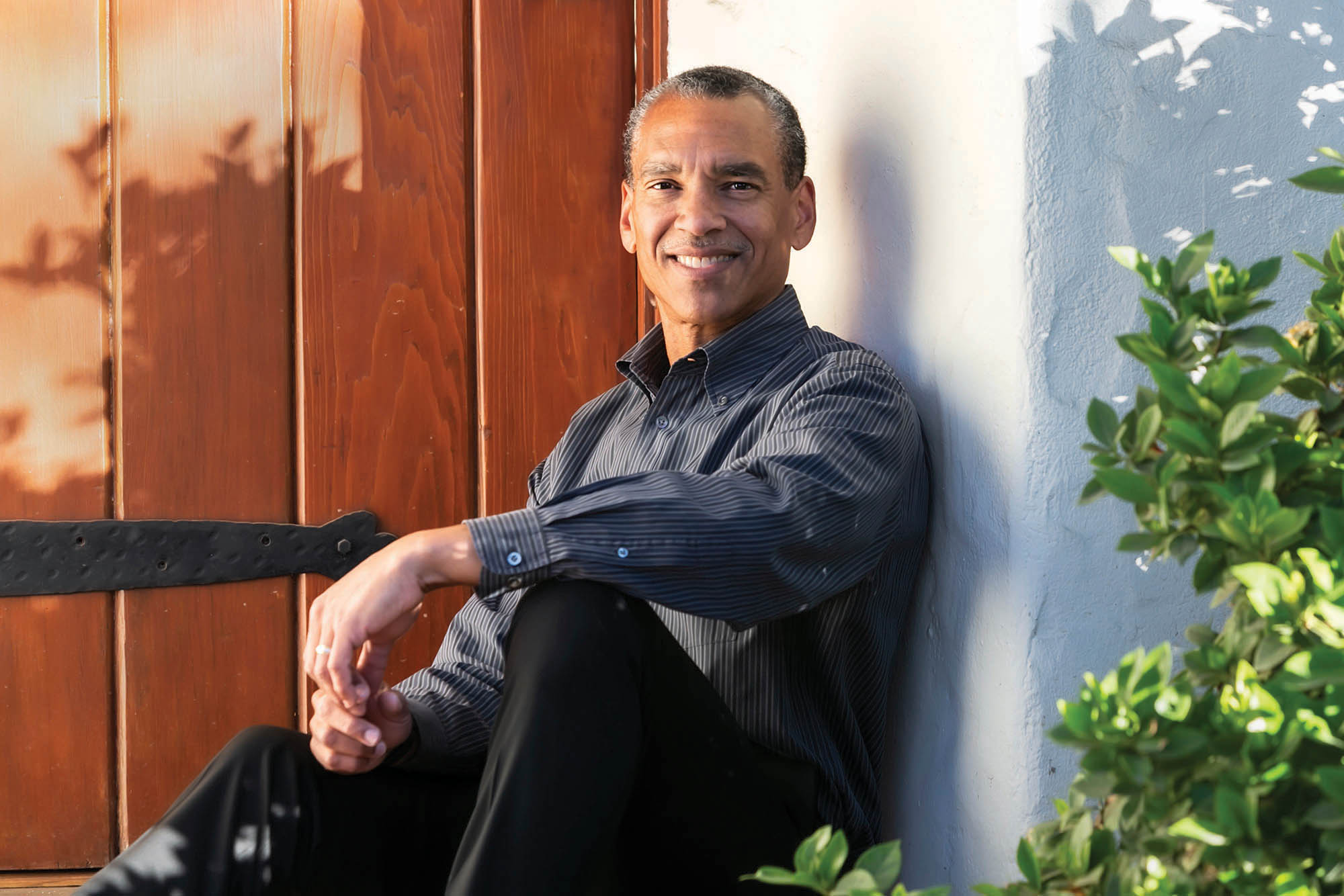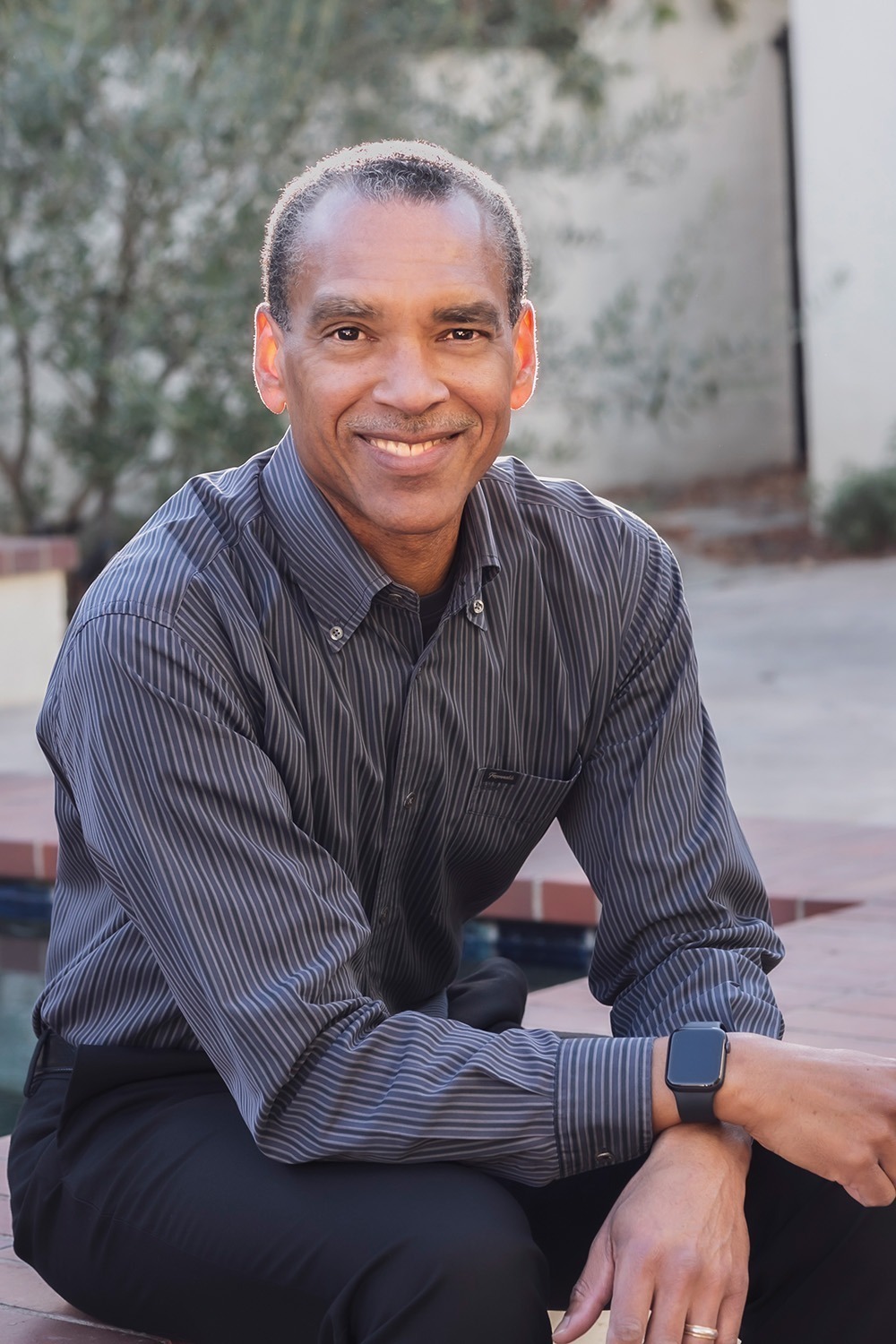Back to the Future
Stephen Mayo reflects on his unique perspective as a Caltech alumnus serving his alma mater as an administrator, and returning to his research program.
by Wayne Lewis

Photography by Leah Lee
Few Techers have contributed to the Institute from as many angles as Stephen Mayo (PhD ’87), Caltech’s Bren Professor of Biology and Chemistry. He has been a student, postdoctoral fellow, faculty member, graduate-option executive officer, vice provost, and division chair. Along the way, he helped to define new areas of biological discovery, developed technology for human health, and served his country as an Obama administration appointee to the National Science Board. We talked to Mayo about a turbulent 2020, career highlights, and his unique view as both a graduate and professional leader at Caltech.

Photography by Leah Lee
Last year was a time of transition for you, completing a 10-year tenure as chair of the Division of Biology and Biological Engineering (BBE). Then a global pandemic changed everything. What was your 2020 like?
It was certainly a challenging time. In my final months as BBE chair, I oversaw the shutdown of more than 50 labs when local restrictions were imposed, while also addressing the need to keep essential work, such as COVID-19 research, moving forward. After restrictions eased, I helped to ensure that labs reopened in a manner consistent with our COVID-19 protocols, including significantly reduced density of researchers in our buildings.
In my own research, we pivoted our efforts in antibody engineering to COVID-19, working with [Caltech biologist] Pamela Bjorkman [PhD] and Protabit, a Caltech spinout I cofounded a number of years ago. The basic idea is to use computational design to enhance the neutralization potency of anti-SARS-CoV-2 antibodies isolated from recovered COVID-19 patients. With success, we could provide passive immunization at low doses, potentially with an EpiPen-like autoinjector in an outpatient setting.
We’re making progress but still have a way to go. We’ve been fortunate to receive generous support from senior trustee Charlie Trimble [BS ’63, MS ’64].
The Institute tapped you for its COVID-19 vaccine group. Broadly speaking, what are the group’s approaches and goals?
The overarching goal of the Vaccine Planning Working Group is to ensure that Caltech is fully prepared to receive, store, and administer vaccine to our community. As the only faculty member on the committee, my primary role is providing advice on technical issues. There are lots of logistical challenges, such as coordinating with public health authorities, developing vaccination priority lists, and addressing the cold storage challenge.
Over the course of 16 years, you served Caltech in a number of leadership positions. Speaking as an alumnus and scientist, what are some of your personal highlights?
I was vice provost during the Great Recession, and we engaged in an assertive technology licensing project that involved filing lawsuits against well-known companies infringing on Caltech/JPL patents covering CMOS [complementary metal-oxide-semiconductor] imaging. We grossed over $100 million in settlements right when the revenue was really useful.
From my time as division chair, I’m really proud of integrating bioengineering into the division and helping to establish the Chen Institute for Neuroscience, the Chen Neuroscience Research Building, and the Merkin Institute for Translational Research.
What I’m most proud of, though, is hiring an amazing group of faculty and helping junior faculty develop into tenured professors with field-leading research programs. At the end of the day, Caltech’s success boils down to having the best and the brightest for everything we do. The Institute’s tradition of hiring great faculty is our seed corn for the future.
Having been involved with Caltech in so many capacities, what would you like your fellow alumni to know about how the Institute works?
I think the Institute works at every level—education, research, administration—to break down obstacles that hold back progress. Caltech’s approach to solving hard problems—an unabashed dose of barrierless, interdisciplinary science and engineering—is what brought me here as a graduate student and brought me back as a faculty member.
As part of the administration, I tried to maintain, and hopefully enhance, the idea that no problem is too hard for Caltech.

Photography by Leah Lee
The overarching goal of the Vaccine Planning Working Group is to ensure that Caltech is fully prepared to receive, store, and administer vaccines to our community.
– Stephen Mayo
Your own work has bridged fundamental science to entrepreneurial pursuits translating your discoveries. Can you talk about the importance of connecting the two?
I’ve had several opportunities to translate my work into the real world through Caltech spinouts, as both a graduate student and a faculty member. Doing things that have an impact on real people has always been important to me. I’m happy to say that technology from one of my companies is now in two FDA-approved drugs in clinical use.
Caltech is set up nicely to encourage translational work. After all, our mission statement includes working to “benefit society.” In some sense, translation is part of our DNA.
Your early work broke new ground in computational protein design when many thought your goals were all but impossible. What kept you motivated?
One part of the answer is that we didn’t know enough to believe what we were doing was impossible. Sometimes ignorance is bliss.
The other part is that we were having lots of fun making incremental progress, and we just ignored the naysayers. I had lots of internal moral support from Caltech and super enthusiastic, talented graduate students and postdocs. Of course, competition from other labs working in the same area provided its own flavor of motivation.
What future direction in your field are you most excited about?
Developing computational approaches to directly design enzymes remains a significant unsolved problem, because of the need to include both dynamics and quantum mechanics in the calculations. We’ve done some work with a static snapshot of the calculated transition state of the desired reaction. This works somewhat, but the enzymes aren’t nearly as good as naturally occurring ones. To successfully design enzymes from scratch, it will likely take new scientific insight and technological breakthroughs.
What notable changes have you seen at Caltech since your time as a student?
The increase in buildings on campus, including the new Chen Neuroscience Research Building, which is located where I used to park my car. As a graduate student in the late 1980s, I remember looking out the window of Noyes into the giant hole that became the Beckman Institute. Construction has really taken off since then.
Caltech is set up nicely to encourage translational work. After all, our mission statement includes working to ‘benefit society.’ In some sense, translation is part of our DNA.
– Stephen Mayo
What is your wish for the future of Caltech?
My first wish for Caltech, and the rest of the world, is to get back to pre-COVID-19 levels of activity. The social justice movement really blossomed as the pandemic took hold. I certainly hope that we don’t go backward on this, and that Caltech can advance on issues of diversity, equity, and inclusion in a way that maintains and even expands excellence with the same level of commitment and enthusiasm that it has shown for areas of historic success.

Wayne Lewis has been a postal worker, security guard, bass player, executive secretary, music critic, beard model, and standup comedian. Today, he writes and consults for a range of organizations that make the world a better place, including the best academic institutions in the Los Angeles area. Born in Jamaica and raised on the East Coast, Lewis lives in a suburban neighborhood of Los Angeles with his wonderful wife and two cats named after action movie heroes from the ’80s.